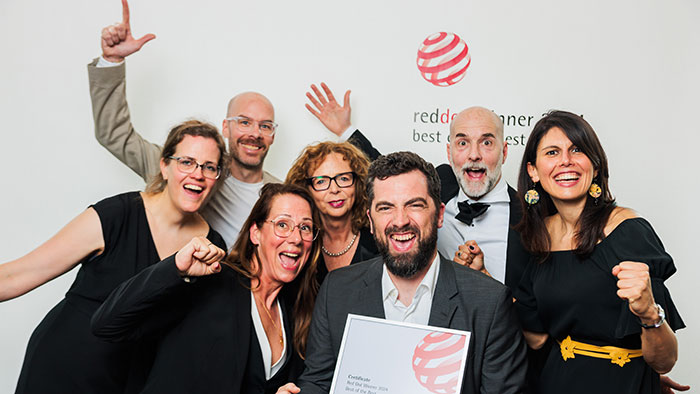At the 2023 European Society of Cardiology Congress (ESC23, August 25-28, Amsterdam, the Netherlands) three eminent cardiologists – Dr. Alexandros Papachristidis of Kings College Hospital London (UK), Dr. Covadonga Fernández-Golfín of the Hospital Universitario Ramón y Cajal Madrid (Spain), and Prof. Robert Manka of the University Hospital Zürich (Switzerland) – will deliver workshops on the role of multimodality imaging in diagnosis, treatment, and therapy assessment for heart failure and valubular heart disease patients. We spoke to Dr. Papachristidis, who is leading a workshop on the use of 3D echocardiography and computed tomography (CT) for multimodality imaging in transcatheter aortic valve replacement (TAVR) procedures, transcatheter edge-to-edge repair of the mitral and tricuspid valves and paravalvular complications, focusing on why real-time 3D imaging is so important and why he believes it will help transform the future of valve disease and heart failure care.
Why is 3D imaging so important in treating heart failure?
Dr. Alexandros Papachristidis (AP): 3D imaging is absolutely fundamental to not only understanding the anatomy and the pathology of heart failure, but also to guide treatment and deliver the best patient outcome. In heart failure cases related to valve disease, we are using 3D transthoracic echocardiogram (TTE) and transesophageal echocardiogram (TOE) imaging in combination with cardiac CT to diagnose the patient and plan treatment but also to monitor and guide procedures in real time and optimize the result. However, as with any emerging imaging technology, it is knowing how to interpret the images that matters. In terms of establishing the diagnosis and guiding treatment in heart failure patients, 2D echocardiography has been around for a long time, which means we have a good set of reference values for things like chamber quantification and ejection fraction. As we move from 2D to 3D TTE it would be useful to have a new set of reference values or at least a correlation between the two modalities. From that perspective, what we really need are large trials or large registries where 3D TTE is used to assess individuals, starting with the normal heart so we can define a set of normal values, alongside trials where we test the measurements, we get from the 3D imaging in heart failure cases against treatment outcome. For example, two large registries arising from the WASE and NORRE studies have provided reference 3D chamber volumes, but there is no consensus so far at the level of the cardiac imaging societies. In addition, all heart failure therapies are dictated by 2D echocardiographic assessment. 3D imaging is more accurate, but we do not yet know how exactly to use the extracted measurements to guide patient management as they have not been directly correlated with treatment outcomes in large studies.
What are the other challenges you face in treating heart failure?
AP: Another challenge we face in heart failure treatment is the ever-increasing workload. We have more patients with heart failure symptoms coming to us for echocardiography, so we need technology that can help to make assessing the patient easier, more reproducible and more accurate. TTE has the advantage that it’s widely available and entirely non-invasive, so when assessing a patient it’s quicker for clinicians and more comfortable for patients, but we need tools to make image acquisition and analysis faster and more reproducible. In addition, we need to improve our understanding with regard to mechanism, hemodynamics, and cardiac mechanics in the wide clinical spectrum of heart failure with preserved ejection fraction. I believe advanced echocardiography is going to play a pivotal role in the field. Finally, we are seeing more complex cases and more complex treatments, especially in valve disease-related heart failure. We now provide transcatheter options for valve disease which require a lot of 3D modeling and very careful selection based on the imaging, which has to be very accurate and high-quality images so we can conduct better modeling and planning for the devices we are going to use, and that represents a significant challenge.
From a cardiologist’s perspective, what do you think AI can contribute to heart failure treatment?
AP: I think there is a big role for AI here, not only in improving image quality even further, but also in dealing with the big data sets we now have so that we can make more accurate measurements of heart function and improve our modeling capability. Given the strong correlation between myocardial fibrosis and heart failure, I also believe that in the near future, there will be AI algorithms that can detect and quantify myocardial fibrosis much faster and more accurately than what we currently do manually. AI could also be used as a tool for training echocardiographers to capture better images, providing them with real-time feedback and guidance. But it’s the basic image processing where AI will be most useful because it’s fundamental to what we do. It makes our life much easier and image analysis much faster and more reproducible. Finally, I see AI developing the field of modeling in advanced cardiac imaging and predicting the outcome of treatments, assisting in both patient and treatment selection.
What other future developments do you see in heart failure care?
AP: There is a lot of research currently being done on medications that can help patients with reduced ejection fraction but also those with preserved ejection fraction where our knowledge is more limited. If we can use 3D and deformation imaging to identify those patients at an early stage, we may well be able to provide them with a much-improved prognosis. There is already a lot of interest worldwide in drug-based therapies to manage certain types of heart failure, but diagnosis and monitoring are always going to rely on cardiac imaging. Imaging is the cornerstone of heart failure, that’s how we diagnose heart failure, how we separate patients into different groups, how we decide on treatment, and how we guide treatment.
What do you think your job as a cardiologist will look like in ten years’ time?
AP: With so many new developments in the pipeline, many of which we will learn about at this and subsequent ESCs, that is a difficult question to answer. Many new trials are being presented at this year’s ESC, so we are going to learn a lot about new treatments and about advances in technology not only in cardiac imaging but also in interventions. But what I am sure about is that everything we do in ten years will still be fundamentally based on imaging and I see a significant role for AI not only in image processing but also in clinical diagnosis and decision making. I believe all contemporary cardiologists would be astonished if we could imagine what cardiac imaging will look like in 10 years’ time.
ESC 2023 hands-on workshops
Philips multi-modality workshops are centered around the patient’s clinical condition and the diagnostic process used by expert teams across Europe. They will show how different cardiac imaging modalities are used to achieve the best possible diagnosis, treatment, and outcomes. Leading cardiology experts will explore and discuss the role of non-invasive cardiac imaging techniques such as CT/SPECT, CMR, Angio, and Ultrasound in the diagnosis and follow-up of relevant clinical conditions such as Cardiomyopathies, Myocardial Storage Diseases, Valvular Heart Diseases, LAAC, and Intracardiac Masses/Tumors.
Visit Philips’ hands-on tutorial sessions for a detailed overview of each workshop hosted by Philips at ESC.
Share on social media
Topics
Contact

Mark Groves
Philips Global Press Office Tel.: +31 631 639 916
You are about to visit a Philips global content page
Continue












